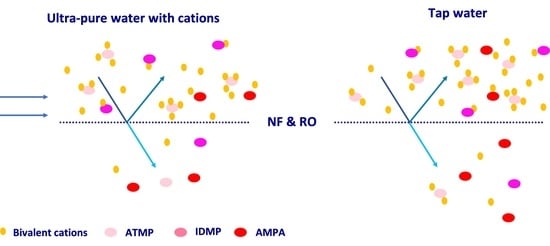Aminophosphonates in Nanofiltration and Reverse Osmosis Permeates
Abstract
Share and Cite
Kuhn, R.; Vornholt, C.; Preuß, V.; Bryant, I.M.; Martienssen, M. Aminophosphonates in Nanofiltration and Reverse Osmosis Permeates. Membranes 2021, 11, 446. https://doi.org/10.3390/membranes11060446
Kuhn R, Vornholt C, Preuß V, Bryant IM, Martienssen M. Aminophosphonates in Nanofiltration and Reverse Osmosis Permeates. Membranes. 2021; 11(6):446. https://doi.org/10.3390/membranes11060446
Chicago/Turabian StyleKuhn, Ramona, Carsten Vornholt, Volker Preuß, Isaac Mbir Bryant, and Marion Martienssen. 2021. "Aminophosphonates in Nanofiltration and Reverse Osmosis Permeates" Membranes 11, no. 6: 446. https://doi.org/10.3390/membranes11060446
APA StyleKuhn, R., Vornholt, C., Preuß, V., Bryant, I. M., & Martienssen, M. (2021). Aminophosphonates in Nanofiltration and Reverse Osmosis Permeates. Membranes, 11(6), 446. https://doi.org/10.3390/membranes11060446



.png)



